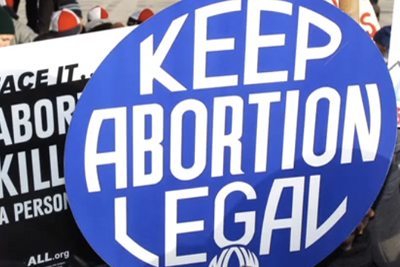The Work Behind ‘Roe v. Wade’ Continues
We must do more than ensure the right to reproductive health care is legal. We must ensure it’s available and accessible in every way.

As we mark the 41st anniversary of Roe v. Wade, we reflect on the ruling that affirmed women’s right to safe and legal abortion. But the anniversary is also a reminder of the continued fight for the ability to make our own reproductive decisions and to ensure that all women in New York City can access the full range of women’s health-care services if or when they need them.
Though Roe confirmed every woman’s right to make her own personal medical decisions without interference, for many women it is far too difficult to exercise that right. Recent data shows that across the nation, politicians are redoubling their attempts to make it more difficult for women to obtain an abortion. According to the nonpartisan Guttmacher Institute, more than 200 restrictions on abortion access have become law since 2010, and more than half of American women of reproductive age live in states where access to abortion is obstructed.
Women living in New York City don’t face the legal restrictions that many women throughout the country do—such as waiting periods, mandated parental involvement, or limitations on publicly funded abortion. But we should not take this for granted. Some politicians in Albany would like to follow the national trend and decrease access to abortion across the state. Last year, the New York state senate failed to pass legislation to codify the protections of Roe v. Wade to ensure that women can get an abortion if her life or health is threatened, despite overwhelming support for the measure.
This assault on health-care access is not stopping at abortion. Politicians are now trying to chip away at the promise through the Affordable Care Act of birth control without co-pays. These key preventive services are fundamental to a woman’s ability to stay healthy.
Exercising reproductive freedom is about much more than the legal right to abortion. It is about having trained and trusted health-care providers who can deliver the care that women need. Thirty-nine percent of New York counties, for example, have no abortion provider.
Ensuring reproductive freedom also means addressing poverty, racism, discrimination against immigrants, and other issues that affect our ability to make the decisions that are best for ourselves, our families, and our communities. For example, in Jamaica, the Rockaways, and West Queens, some one in five residents live below the poverty level. In these communities, a lack of access to health care leads to higher rates of unintended pregnancy and pregnancy-related mortality. Barriers like cost, lack of insurance, and immigration status make it more difficult for low-income and women of color in particular to get the health care they need.
At our health centers, we deliver care, no matter what, to the women, men, and young people of New York City. This includes low- to no-cost contraception, sexually transmitted disease (STD) testing and treatment, life-saving cervical and breast cancer screenings, HIV testing, education and community outreach, and abortion. But in a city where disparities in the rates of unintended pregnancy, HIV, and maternal mortality persist, we have to do better.
As we look ahead to our ongoing fight against these attacks on women’s health-care access across the country, we know that in order to prevail, we must work to do more than ensure the right to reproductive health care is legal. We must ensure it’s available and accessible in every way.
We must make sure Roe v. Wade doesn’t simply stop at the right to abortion. We will realize its promise only when that right is a reality.
